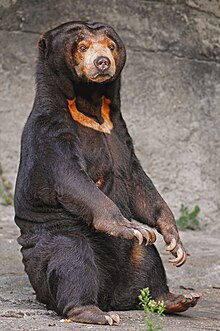South East Asian Zoos Association
 |
|
| Founded | July 1990 |
|---|---|
| Type | National not-for-profit organization |
| Focus | Zoo and aquarium accreditation and advocacy |
| Location |
|
|
Area served
|
Southeast Asia |
| Method | Accreditation |
The only regional organization of zoos for Southeast Asia is the Southeast Asian Zoo Association, (SEAZA). It represents around 90 different conservatories and zoos in Southeast Asia. SEAZA became a member of the World Association of Zoos and Aquariums (WAZA) in 1990. SEAZA Headquarters are currently located in Taiwan. SEAZA is considered a sister organization to the South Asian Zoo Association for Regional Cooperation (SAZARC), which organizes zoos in Nepal, India and other countries in South Asia. Although they preside over two similar regions, the cultures and policies of the regions are too different for a single organization to govern both. The main goals of the SEAZA are to, “Strengthen in-situ conservation and management plans, to increase captive breading through research, to improve standards of non human animal welfare, to provide better recreational learning experiences for zoo visitors, to educate the public about the importance of wildlife conservation, and to promote tourism in Southeast Asia.” Achieving SEAZA’s goals is particularly important as Southeast Asia is one of the most biologically diverse regions in the world, but rapid, recent economic growth of these countries has caused this rare ecosystem to be put in jeopardy. However, today SEAZA is facing significant challenges that is putting its future viability in jeopardy.
Although many zoos existed in Southeast Asia before 1990, there was no formal organization linking these zoos. As more private zoos in Southeast Asia opened to the public and as Southeast Asia became a part of the modern world, there was pressure for their zoos to meet western ethical standards. Many of these zoos had very different governing policies set by their country, while others had no formally established policy. This led to the desire to create some form of governing body that could set standards for all types of zoos across the region. The initiative to form an association of zoos in SEA originated in 1988 at a conference of zoos at the Negara Zoo in Malaysia. The Negara Zoo Director, Idris Malik, wrote the proposal for the creation of SEAZA. In 1989, the zoos met again and the retired Indonesian Military Director, Danudirdjo Ashari, pushed the organization into the official stage and brought it to the WAZA, where it was officially recognized as a member in 1990. Ashari served as the President of SEAZA from 1993 to 1995. Bernard Harrison, the Director of the Singapore Zoo, became President in 1996. At that time, many of the zoos had no operating guidelines or policies. Harrison worked with all the members of SEAZA to establish a written constitution that would guide behavior for zoos in Southeast Asia in 1998. Harrison also established sub committees on breeding, ethics, conservation, and public education. He instituted yearly meetings instead of bi-yearly meetings in 1998. This was motivated in part by the economic crisis of 1997 that started in Thailand and caused the SEAZA to miss their scheduled meeting in Ho Chi Minh City. In 2001 SEAZA held its 10th meeting in Malaysia to establish their sisterhood with SAZARC.
...
Wikipedia
